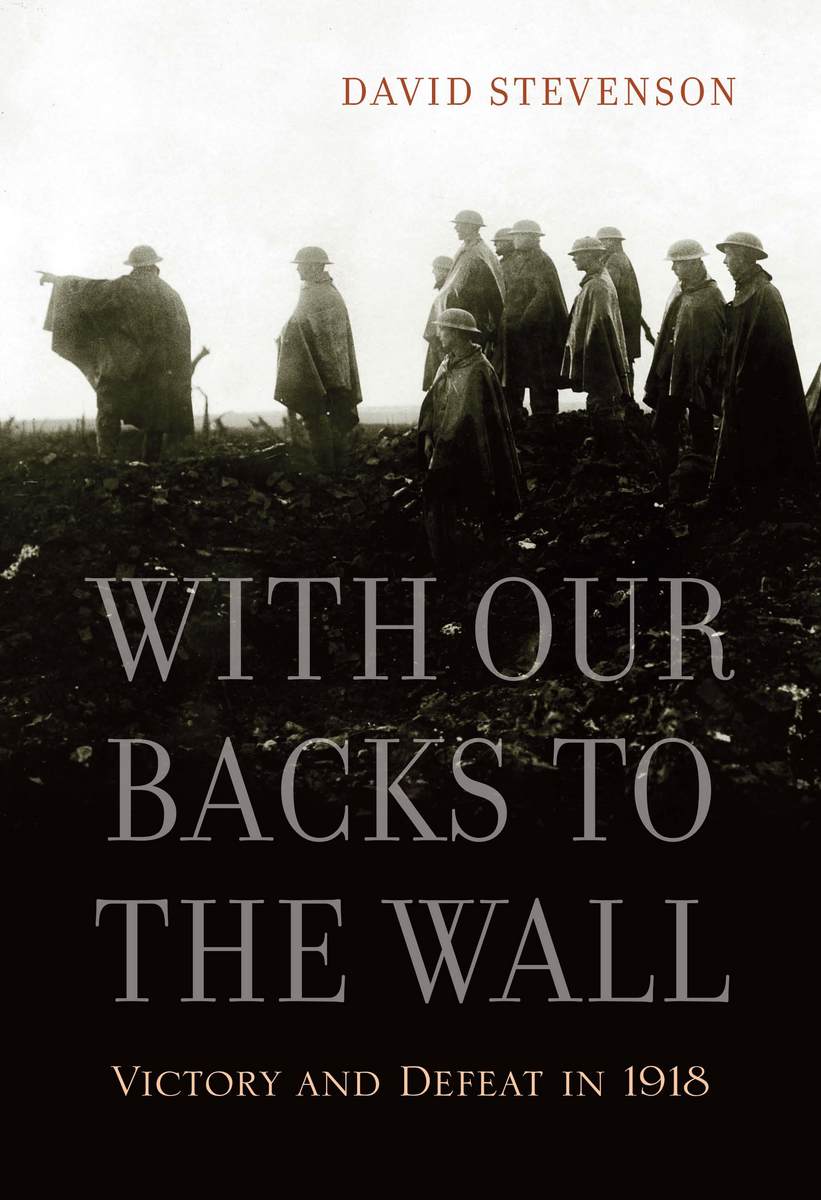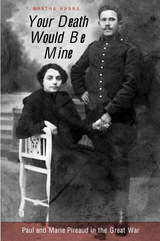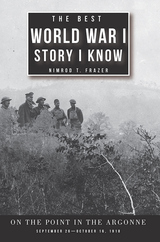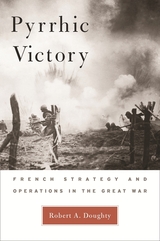A fascinating military narrative… One lesson of With Our Backs to the Wall is that a war ends less than ‘cleanly’ when one side, instead of overcoming the enemy, mostly outlasts it… [A] masterly study.
-- William Anthony Hay Wall Street Journal
A magnificent and exhaustive account of the war’s final year… Stevenson has a deserved reputation as one of the world’s leading authorities on the war… Drawing on numerous original sources in French, German, Italian and English, Stevenson displays masterly scholarship and his prose is crisp and vivid throughout… A book that promises to be the outstanding military history published in 2011.
-- Tony Barber Financial Times
Wide-ranging and clearly argued… This is, as one would expect from a historian of Stevenson’s great learning and analytical power, a masterly study of the year that began with Allied demoralization and defeat, yet ended with the complete collapse of the Central Powers. Dragged down by the desertion of its allies, undermined from within by strikes, pacifist propaganda, mutinies and finally red revolution, Germany’s tired, hungry and overstretched front-line armies were in no state—physically or psychologically—to resist superior Allied technology and numbers. Allied victory ended the war—but, as Stevenson brilliantly shows, it could have had a very different outcome.
-- Nigel Jones The Telegraph
Brilliant and comprehensive… One of the many merits of Stevenson’s book is his analysis of the sustainability of the war efforts of both sides in terms of the development and production of weaponry, food supplies, finance and morale, and the way resources interacted with, and weakened or strengthened, the ability of armies… What weight should be given to the failure of the German offensive as opposed to other, more long-term considerations in determining the defeat of the Central powers? A major debate among historians of the ‘total wars’ of the 20th century concerns where the balance lies between the battlefield and the strength of combatants’ economies in determining the eventual victors, and Stevenson’s comprehensive study is a major contribution to this debate.
-- A. W. Purdue Times Higher Education
Stevenson’s book is a masterful, lucid analysis that does not simply tell the tale [of World War I]. It also considers in detail the factors of technology, morale, supply, economics, and politics that contributed to Germany’s defeat.
-- Lawrence D. Freedman Foreign Affairs
While the Great War is hardly a neglected subject, its final phase has not previously been the subject of a single-author study that gives equal attention to both sides of the conflict. This book fills that void. Drawing on archival research in several countries, Stevenson explores the events and decisions that led to Germany’s defeat in 1918, analyzing the reasons for Allied success and the collapse of the Central Powers. The strength of the book lies in his ability to weave together astute analysis of the antagonists’ abilities and weaknesses, from food supply to finance, strategy to technology, and logistics to morale… Stevenson delivers on his promise to write a definitive account of the military history of the Great War’s endgame.
-- Robert Gerwarth Irish Times
An immensely useful study, emphasizing the crucial importance of morale, political stability and trust.
-- Max Egremont Literary Review
Historian David Stevenson’s meticulously researched book starts as the new Russian communist government makes a separate peace with Germany and her allies, releasing nearly a million troops from the Eastern Front. Allied losses during the previous three years had been catastrophic and while America had come into the war, its intervention seemed likely to be too little too late. Stevenson describes how Ludendorff’s doomed offensive Operation Michael proved disastrous for the Germans. He pinpoints the American action far earlier than anyone had thought possible as one of the key factors that led to the Allies’ unexpected but overwhelming victory in 1918.
-- Oxford Times
Stevenson brings to his study a formidable authority and mastery of the sources, and judgments that seem admirably measured and nuanced.
-- Max Hastings Sunday Times
What David Stevenson achieves is a magisterial single volume synthesis of all the themes to deliver a punchy, incisive reboot of WWI history that is never a dull read… In saluting the unsung elements of victory, Stevenson ensures his big themes book is myth-busting in its small detail, too.
-- Charles Strathdee Warships
Although the tragedy of the ‘lights going out’ has been endlessly examined since the summer of 1914, the end of the Great War has received considerably less attention. Stevenson does much to rectify this imbalance in his brilliant new study, an analysis-cum-narrative of the epochal events of 1918. He draws on the most important academic studies of the war, personal memoirs, printed primary sources, and his own expertise, honed over almost 30 years of work, to craft a sweeping, comprehensive explanation of how and why the war turned, and turned so suddenly, from stalemate and even possible German victory to triumph for the Western Allies. Following two finely wrought narrative chapters detailing the end of the war, Stevenson examines in rich detail the ‘new warfare,’ personnel and morale, control of the seas, wartime economies, and the home fronts. In every area—the volume is superbly researched—the liberal–socialist hybrid systems of the West proved superior to the more traditional and authoritarian Central Powers, which exhausted their remaining resources in the reckless German offensives of 1918.
-- G. P. Cox Choice
While most accounts of World War I focus on the precipitating events at the beginning, with the complex network of entangled alliances, Stevenson instead offers a ‘comprehensive investigation’ into the final year of the war. He presents readers with an account that judiciously balances narrative and analysis, beginning not with Russian/Austrian posturing in the Balkans, but with offensive maneuvering on both sides in 1918. Stevenson also considers events on the home fronts, technological innovations that industrialized mass slaughter, and the economies of scale that withstood the strains produced by war. This is a monumental study deserving of a wide readership by scholars and generalists alike.
-- Brian Odom Library Journal (starred review)
The final months of WWI have been subjected to increasing attention by specialists. What has been lacking to date is a comprehensive analysis explaining why the conflict ended when it did. Stevenson complements Cataclysm, his political history of the war, with this definitive account of the final stages… The decisive counteroffensive, extending across Europe and into the Middle East, reflected above all the ability to manage resources at all levels, from a ‘superstructure of intergovernmental institutions’ to the front lines of increasingly open, mobile warfare. Stevenson’s detailed, lucid description of the development and maturation of that ability reflects encyclopedic mastery of published and archival sources while synergizing military, economic, political, and social-cultural factors. It is a professor’s page-turner. It is also a door-opener to any reader seeking to understand the Great War’s last stage.
-- Publishers Weekly (starred review)
Stevenson makes an important contribution to our understanding of the events of 1918. This is a major scholarly achievement, bringing together an analysis of the events of 1918 unlike any other book available.
-- Michael S. Neiberg, author of Dance of the Furies: Europe and the Outbreak of World War I






























